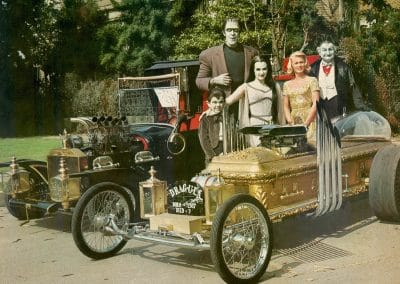It’s a Wonderful Life: Behind the Scenes . The classic Christmas film “It’s a Wonderful Life” remains an enduring symbol of hope and goodwill, even decades after its initial release in 1946. Directed by Frank Capra, this heartwarming story centers around George Bailey, played by James Stewart, a man who is given a chance to see what life would have been like if he had never existed. The film’s production was rich with both challenges and creative solutions, leading to a timeless piece that continues to resonate with audiences of all ages during the holiday season.
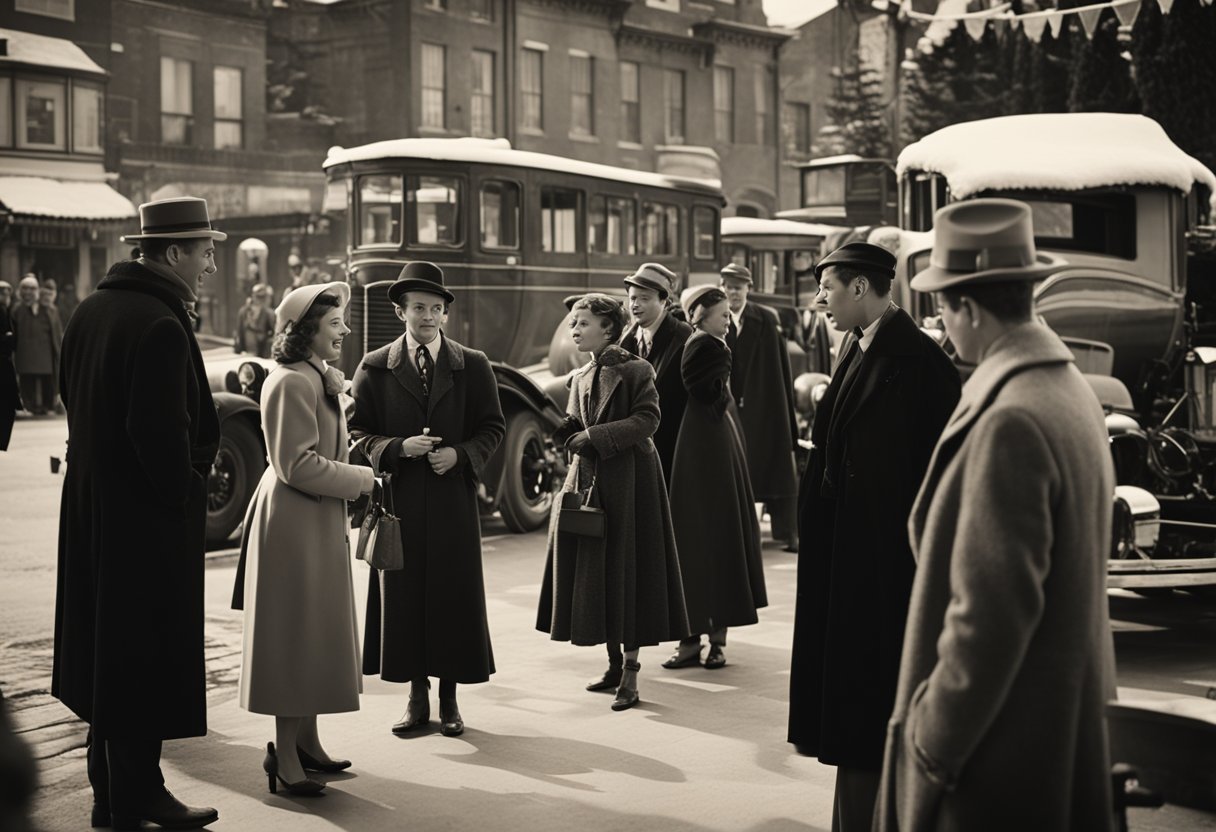
Deeply woven into the fabric of American culture, “It’s a Wonderful Life” was conceived during a period of exceptional filmmaking. Its behind-the-scenes stories reflect the dedication and innovative spirit of its cast and crew. An example of such innovation was the new snow-making technique developed specifically for the film, resulting in a more realistic and enchanting winter wonderland which became a hallmark of the movie’s Christmastime setting.
James Stewart’s portrayal of George Bailey remains one of his most iconic roles, showcasing the actor’s range and depth. Stewart, along with a stellar ensemble cast, brought George Bailey’s story to life under Capra’s thoughtful direction. Each scene, from the joyous to the somber, was crafted with meticulous attention, ensuring that “It’s a Wonderful Life” not only entertained but also imparted a poignant message about the value of an individual life.
Origination of the Story
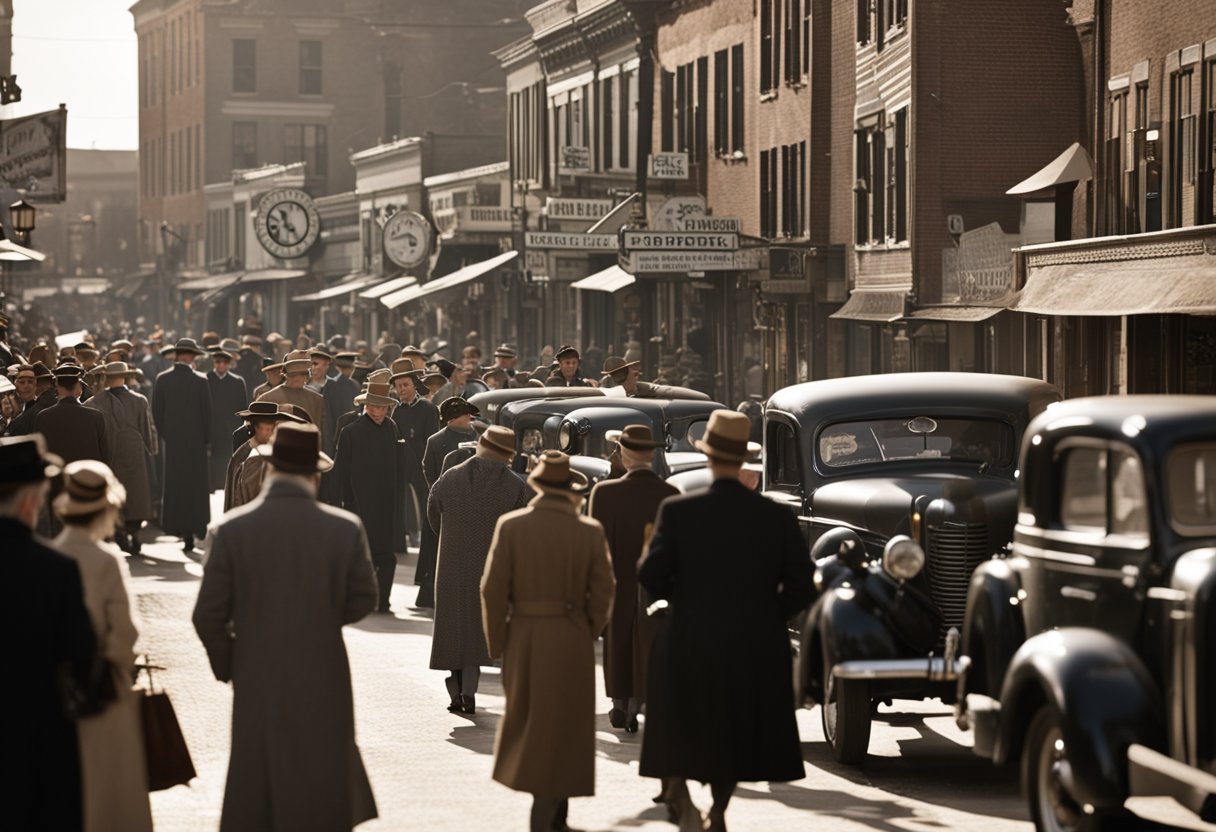
The timeless appeal of It’s a Wonderful Life traces its beginnings to a humble short story and the collaboration of talented writers who transformed it into a cinematic classic.
Philip Van Doren Stern’s Contribution
Philip Van Doren Stern conceived the core narrative of It’s a Wonderful Life through a short story titled “The Greatest Gift.” This idea came to Stern in a dream, igniting a creative process that culminated in a poignant tale about the impact one individual can have on the lives of others. After failing to get his story published, Stern opted to send it out as a Christmas card to friends, which ultimately brought the story to the attention of Frank Capra, who saw the film potential.
Development of the Screenplay
Once in the hands of filmmakers, the short story underwent significant development to become the screenplay for It’s a Wonderful Life. The writing team, including Frances Goodrich and Albert Hackett, expertly expanded upon Stern’s foundational idea. Their screenplay brought to life the uniquely American setting of Bedford Falls, filled with characters that audiences would grow to love and cherish through decades of cinematic history. This expansion included the creation of detailed backstories, consequential life events, and the deepening of character complexities.
Casting the Characters
The ensemble cast of “It’s a Wonderful Life” brought to life the memorable residents of Bedford Falls. Director Frank Capra skillfully cast actors who could carry the film’s potent mix of drama, humor, and sentimentality.
James Stewart as George Bailey
James Stewart was cast as the film’s protagonist, George Bailey, whose journey of self-discovery forms the heart of the story. Initially, the role was considered for other actors, but Stewart, with his everyman appeal, embodied the character’s struggles and triumphs.
Donna Reed’s Role
Donna Reed won the role of Mary Hatch, George Bailey’s steadfast wife. Reed added both strength and warmth to the character, undergirding her performance with a nuanced tenderness that helped ground George’s expansive dreams.
Lionel Barrymore and the Ensemble
Lionel Barrymore portrayed the formidable Mr. Potter, the film’s antagonist, with a commanding presence. The ensemble cast included many familiar faces of the time, creating a rich tapestry of community that elicited genuine emotional investment from the audience. Notable mention goes to actors like Thomas Mitchell and Henry Travers, who played Uncle Billy and Clarence Odbody, respectively.
Direction by Frank Capra
Esteemed director Frank Capra brought his signature blend of optimism and Americana to It’s a Wonderful Life, crafting a timeless Christmas classic that has resonated with audiences for generations.
Capra’s Vision for the Film
Frank Capra envisioned It’s a Wonderful Life as more than just a holiday movie; it was a deeply personal project. Meshing the raw emotion of human struggles with uplifting moral messages, he intended to reflect the quintessential American spirit he celebrated in previous works like Mr. Smith Goes to Washington. Capra’s approach was to illustrate the value of individual actions and the profound impact one person’s life could have on a community.
Collaboration and Challenges
The production of It’s a Wonderful Life was not without its hurdles. Capra faced the daunting task of returning to Hollywood after a stint of making war films. He aimed to establish Liberty Films as a powerhouse, which meant the success of this film was critical. Known for his collaborative nature, Capra worked closely with his actors to extract poignant performances, occasionally resulting in on-set improvisation that benefited the film’s authenticity. Notably, the scene where James Stewart’s character offers an impromptu prayer was a result of this method, conveying an intensity that only Capra could elicit from his cast.
Production Details
In the journey to bring “It’s a Wonderful Life” to the silver screen, the production details span innovative techniques and historical backlots, offering a glimpse into classic filmmaking.
Filming Location
“It’s a Wonderful Life” was primarily filmed on RKO Pictures’ backlot in Encino, California, where the fictional town of Bedford Falls sprang to life. The lot featured a main street, residential areas, and a variety of other sets critical to the film’s setting.
Set Design and Special Effects
The movie sets were crafted to depict a quaint town brimming with the spirit of community and the struggles of its inhabitants. Set designers utilized a blend of practical props and special effects to create a convincing environment that resonated with viewers.
- Practical Effects:
- Buildings and interiors meticulously furnished to reflect the era.
- Ingenious mechanical devices to simulate natural phenomena, such as the cracking of the ice in a pivotal scene.
The Creation of Snow
Creating convincing snow on set posed a particular challenge. Traditional methods utilized materials like painted cornflakes; however, they proved too noisy during filming.
- Materials:
- Foamite: Mainly used for firefighting, it was repurposed to craft a silent snowfall.
- Asbestos: Though now known for its health hazards, at the time it was a common material for fake snow due to its fire-retardant properties.
Each element contributed to the authentic feel of “It’s a Wonderful Life,” cementing its legacy as not just a holiday classic, but a milestone in production design.
Music and Soundtrack
The musical score of “It’s a Wonderful Life” is a significant aspect of the film’s production, contributing deeply to its emotional resonance. Featuring a score by the renowned composer Dimitri Tiomkin, the soundtrack of the film remains an iconic piece of cinema history.
Dimitri Tiomkin’s Score
Dimitri Tiomkin, an acclaimed composer of his time, crafted the original score for “It’s a Wonderful Life” incorporating thematic elements to support the film’s narrative. Tiomkin, who was known for his ability to enhance the emotional weight of a film through music, interwove original compositions with popular music quotes, creating a memorable auditory experience.
This score played a pivotal role in the storytelling, shaping the film’s atmosphere and ensuring that moments of joy, despair, struggle, and triumph were accompanied by fitting musical cues. Tiomkin’s contributions to “It’s a Wonderful Life” reflect his versatility and ability to convey nuanced emotions through his compositions. Although his work on the film was not nominated for an Academy Award, his score is celebrated for its artistry and effectiveness.
Cultural Impact and Legacy
This section delves into the remarkable journey “It’s a Wonderful Life” had from its initial reception as a box office disappointment to its resurgence through television and becoming a quintessential Christmas film.
Initial Reception
After its release, “It’s a Wonderful Life” encountered an underwhelming box office performance, often described as a box office flop. In 1946, the expectation versus the reality of its earnings signaled a lackluster public interest at the time.
Enduring Popularity
Despite its initial reception, the film found a second life when its copyright lapsed inadvertently in 1974, leading to frequent television broadcasts. During the Christmas season, it became a staple feature, its themes resonating with a much larger audience over time. The movie’s transformation into a beloved classic is a testament to its enduring popularity.
Copyright Lapsed and Television
Television prominently played a role in the renewal of interest in “It’s a Wonderful Life.” The lapse in copyright allowed stations to air the film without licensing fees, vastly increasing its accessibility during the holidays. Later, a colorized version was released, although it sparked debate among purists and film aficionados alike. The film’s association with the holidays placed it alongside other perennial favorites like “White Christmas,” cementing its status as an iconic Christmas movie.
Behind-the-Scenes Anecdotes
The allure of “It’s a Wonderful Life” is enhanced by fascinating stories from its production. These glimpses reveal the realities faced by the cast and crew.
Cast and Crew Experiences
During the filming of “It’s a Wonderful Life,” the cast and crew navigated a variety of challenges and experiences. A heat wave struck during production, contradicting the winter setting of the film. Despite the sweltering conditions, they used innovative techniques to create the illusion of snow, enhancing the film’s authenticity.
Jimmy Stewart, playing the lead character George Bailey, delivered a performance that has become iconic. Interestingly, this was Stewart’s first film after serving in World War II, adding depth to his portrayal of a man grappling with his purpose in life. The military service experience likely contributed an additional layer of emotion to Stewart’s performance, resonating with many viewers then and now.
Ellen Corby, who later became famous for her role as Grandma Walton in “The Waltons,” had a small but memorable part in the film. Her interaction with Jimmy Stewart at the Building and Loan showcases a natural rapport that speaks to the strong performances delivered across the board.
The child actor Robert J. Anderson, who played the young George Bailey, experienced firsthand the demanding expectations of director Frank Capra. In a scene where Mr. Gower slaps young George, Anderson’s ear was actually struck, resulting in genuine tears that lent truth to the moment’s intensity.
H.B. Warner, the actor playing Mr. Gower, deeply invested in his role, even to the point of real inebriation during the scene to bring realism to his performance as the distressed pharmacist. The fine line between acting and reality for Warner translated into a powerful and memorable part of the movie.
These stories not only reflect the dedication of the cast and crew but also contribute to the enduring legacy of “It’s a Wonderful Life”—a film that continues to capture hearts with its timeless message and behind-the-scenes lore.
Conclusion
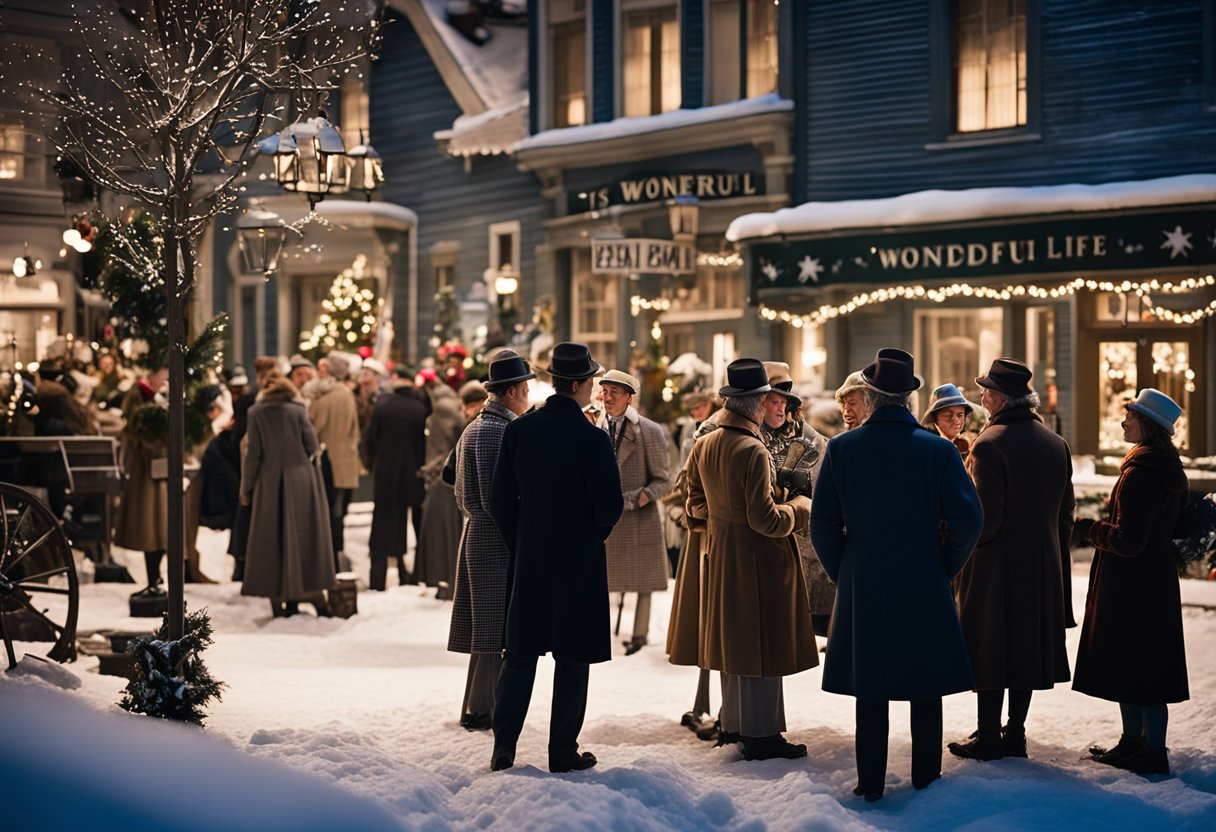
In exploring the timeless classic “It’s a Wonderful Life,” audiences and critics alike have dissected and discussed its profound impact on cinema and culture. The essence of the film, which intertwines the fragility of life with a potent message of hope, continues to resonate with viewers even decades after its initial release.
The Film’s Message and Relevance
“It’s a Wonderful Life” presents a poignant message about the value of individual existence through its Christmas Eve narrative. As the main character, George Bailey, contemplates suicide, he is visited by an angel from Heaven who illustrates how life would change had he never existed. The film skillfully delivers a story that is as relevant today as it was upon its release, reinforcing the notion that each person’s life significantly affects those around them.
During the holiday season, the movie’s themes of despair and redemption become particularly poignant, reminding viewers of the importance of community and individual contribution. It is a film that encourages reflection on the impact of one’s life choices and the interconnectedness of human experiences.
Frequently Asked Questions
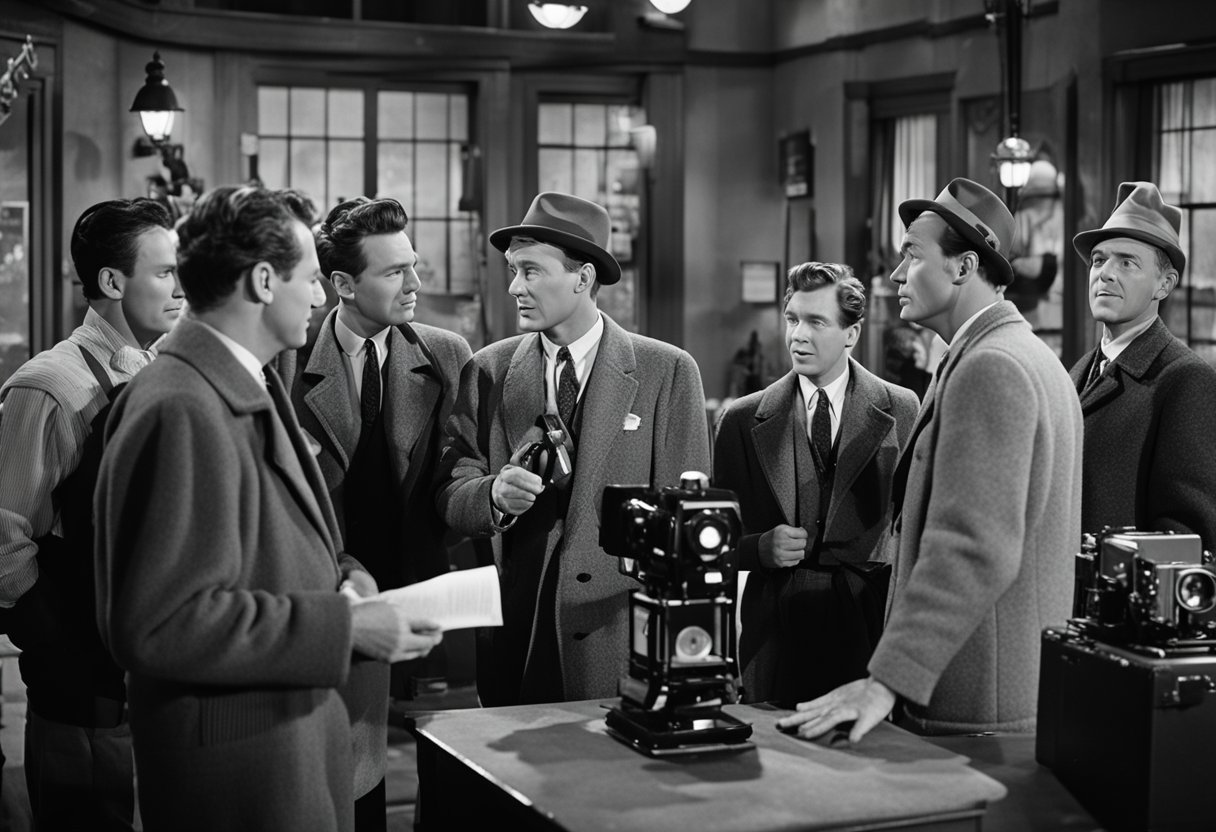
Discover the intricacies of the classic film “It’s a Wonderful Life” through these common queries about its production.
What innovative techniques were used to create the snow effects in It’s a Wonderful Life?
To create a realistic snowy environment, the production resorted to a new method using foamite, sugar, water, and soap flakes. The innovative technique was a departure from the traditionally used painted cornflakes.
How many of the scenes in It’s a Wonderful Life were filmed on a soundstage versus on location?
Most of the filming for “It’s a Wonderful Life” took place on soundstages, with elaborate sets built to represent the town of Bedford Falls, although some location shooting did occur.
Is the iconic house from It’s a Wonderful Life preserved and can it be visited?
The house, which was part of the custom-built Bedford Falls set on the RKO Ranch in Encino, California, does not exist anymore, and therefore, cannot be visited.
Which actors were considered for the main roles in It’s a Wonderful Life before the final cast was chosen?
Before Jimmy Stewart was cast as George Bailey, other actors including Henry Fonda and Cary Grant were considered for the main roles in the film.
What were some of the major challenges faced during the production of It’s a Wonderful Life?
Challenges during production included creating a convincing snowy setting amid a heatwave and managing the budget to accommodate the extensive set construction required for the film.
What is the significance of Bedford Falls in It’s a Wonderful Life, and was it inspired by a real place?
Bedford Falls, the fictional town in “It’s a Wonderful Life,” serves as the heart of the story, symbolizing small-town America. Its detailed depiction was inspired by director Frank Capra’s own experiences and observations of small towns, though it wasn’t modeled after one specific location.





